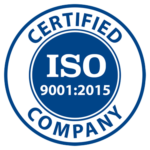Protect Your Equipment with a
Sump Spring Cleaning
How to Freshen Your Machines Now for Better Performance Later
At a time when markets are tight and it’s harder to get grease, your business needs to take care of your supply. Our Pack Logix experts want to help you maintain the grease that you have, whether in a tube or running through a CNC machine (which stands for computer numerical control).
As spring draws near and humidity rises, now is the time to be thinking about how the changing weather can impact the life of the lubricants in your machines—and the machines themselves. One way to protect your business and your investment is to do a thorough sump cleaning. Read more about the importance of this task and a step-by-step guide.
Why Is It Important to Perform Regular Sump Cleaning?
- If you have way lube or hydraulic fluid leaks, excess tramp oil (see below) is circulated into coolant and can produce extra bacterial issues.
- You want better performance from your expensive machine. Overused fluids can lead to components getting sticky from residues, bacteria, or even your drill bits and tooling breakage, which can fall into the fluid over time.
- The big price tag: Tool life! Those tools are expensive, so remember the lubricity (capacity for reducing friction, or really the slipperiness) of fresh fluid is higher than old fluid.

What Are You Cleaning Out of the Sumps?
- Metal Chips
- Swarf
- Mold, Fungus, and Bacteria
Bacteria can create odor problems and skin problems such as dermatitis.
- Tramp oil
An unwanted contaminating substance that migrates into the coolant of a machining center; for example, bearing lubricants can slough off over time inside the machine and mix with cutting fluid or coolant.
How Often Should You Clean Your Sumps?
How Do You Clean Out Your Sump? A Guide:
STEP 1:
Do not clean out your system until the lab pulls apart a sample from the sump. A lot of times, it just may need a couple extra slugs of straight coolant to raise concentration, or an ounce or two of biocide. Do not discount the value of lab analysis.
STEP 2:
Drain your sumps completely.
STEP 3:
Remove and spray out your sump. Chips and sludge will need to be sprayed out, not just wiped out. There could be biological issues in those dark spaces and under the chips.
STEP 4:
Circulate clean water throughout your machine for 5 minutes.
STEP 5:
Add a high quality sump cleaner with a biocide additive. Do not just pour it into the sump—follow the manufacturer’s instructions on the proper amount. More is not better, and less does no good!
STEP 6:
Remember, besides an excellent cleaner, time is the other important part. Circulating the cleaner for an entire shift, up to 24 hours, is ideal. Then you may want to manually scrub residues or hard to reach gunk.
Tip Time: Never choose a regular cleaner intended for home use, especially ones with bleach. These sump cleaners are formulated to include not only surfactants, which have degreasing properties, but a lot of them have defoamers and some even include rust prevention, which household cleaners lack.

STEP 7:
Drain your machine completely to avoid foaming. Then add fresh water and circulate several turnovers, so the filters and lines are all free of dirty water and cleaner.
STEP 8:
Now recharge your machine with fresh coolant at the proper concentration your coolant supplier recommends.
Pack Logix has a depth of packaging knowledge and experience with fluids and solvents, not just greases, oils, and lubricants. We want to help you keep your systems running smoothly. Reach out to learn all the ways we can assist your business.


